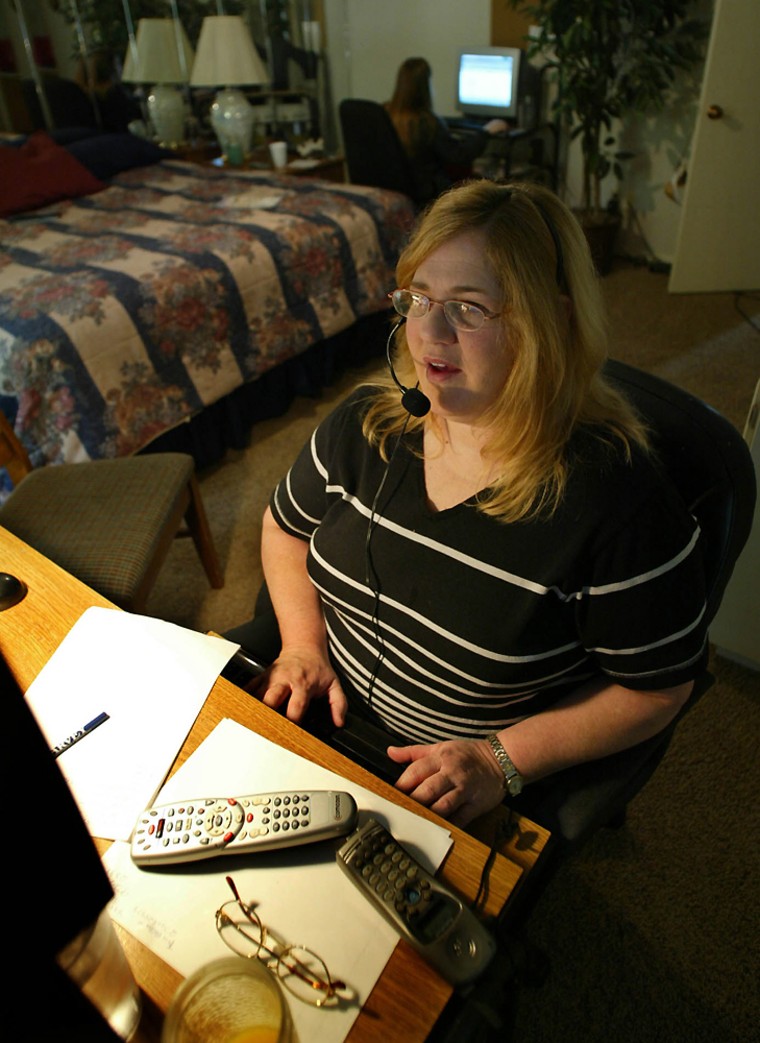For many individuals, telecommuting seems like an ideal proposition. It’s possible to avoid mind-numbing gridlock and toss aside uncomfortable business attire. There’s the possibility of having lunch with the kids or spending a few quiet minutes nestled in the garden. In an era when quality of life is sorely lacking, telecommuting seems like a sure-fire way to gain a sense of balance. According to a 2003 survey conducted by Milwaukee-based market research firm The Dieringer Research Group, 23.5 million U.S. workers who are not self-employed now telecommute.
But, along with all the gains usually comes a bit of pain. For many workers, out of touch can mean being out of the loop. With no corporate office or boss in sight, it can prove difficult to crank up the motivation level. What’s more, some telecommuters worry that they will find themselves odd-person out when it comes to promotions or choice projects. On the other hand, plenty of telecommuters have also found themselves working nights and weekends—simply because the computer and mobile phone are there and constantly beckoning.
“Telecommuting can prove extremely challenging,” says Andrew J. DuBrin, a professor of management at Rochester Institute of Technology in Rochester, N.Y. “Some people thrive in a home-office environment while others falter. Most people have to work at creating the right environment and structure.” Without a good deal of discipline, he says, it’s all too easy to wind up underperforming or tackling a steady stream of work at the expense of family, friends and personal sanity.
Minda Zetlin, author of “Telecommuting for Dummies” (John Wiley & Sons, 2001) argues that telecommuting isn’t a panacea for all the ills of the workplace. “If you hate your job or you hate someone at the office, it probably isn’t going to solve the problem to work at home,” she says. In addition, she points out that a lot of people enjoy telecommuting the first few days or weeks but then discover that it is not what they expected. “There is a social element to work and some people do not function well when they’re away from the office.”
Tricks of the trade
Deidre Moore, director of strategic communications for Workscape, a Framingham, Mass., software company, knows all about the pros and cons of telecommuting. She began working at home two days a week after the birth of a child in August 2001. Telecommuting helps her steer clear of a daily 120-mile commute and provides extra time for tending to her child in the morning and when he returns from daycare at 5 p.m. “I needed to have more work-life balance while continuing to work full time,” she says.
Yet, working at home can present a few challenges, Moore admits. “There are days when it is tempting to find other things to do and other days that I’m involved in a project and it is tough to stop at five o’clock,” she says. In order to stay in a working mindset, she has set aside a dedicated office space in her home and follows the same morning ritual as when she heads off to the corporate offices. She heads back into the home office on evenings and weekends only when she has an urgent project. “As a professional it is important to adopt certain policies and practices that provide a sense of balance,” Moore explains.
Another longtime telecommuter, Paula Sharpe, sets specific hours that she sits at the desk in her home office. At the end of the workday she shuts the PC off and does not check business related e-mail or voicemail messages. And she tries to stay out of the office when she is not working. Sharpe, director of marketing for Fairfield, N.J., software provider StayinFront Inc., spends three to five days a month at the corporate offices and the rest at her home office in Oxnard, Calif. Sharpe says that it took her about three months to adjust to a telecommuting schedule. She initially took walks just to get out of the house.
Right frame of mind
Establishing firm boundaries is essential, says Nancy deLay, an organizational psychologist who had studied telecommuting for over a decade and currently serves as vice president of the International Telework Association & Council, a Silver Springs, Md., organization that promotes telecommuting. She suggests that telecommuters use separate PCs for work and home-related activities. “You avoid getting distracted during the workday but you also don’t get sucked back into work in the evening when you go to shop online or check your personal e-mail,” she says.
It’s also wise to create daily incentives. Some telecommuters reward themselves with coffee breaks or a few minutes of downtime as they achieve goals throughout the workday. Those who feel isolated should consider setting up an occasional lunch meeting with co-workers or other professionals. Says DuBrin: “Those that take the work seriously and create the right physical and psychological structure can find telecommuting a rewarding experience.”
